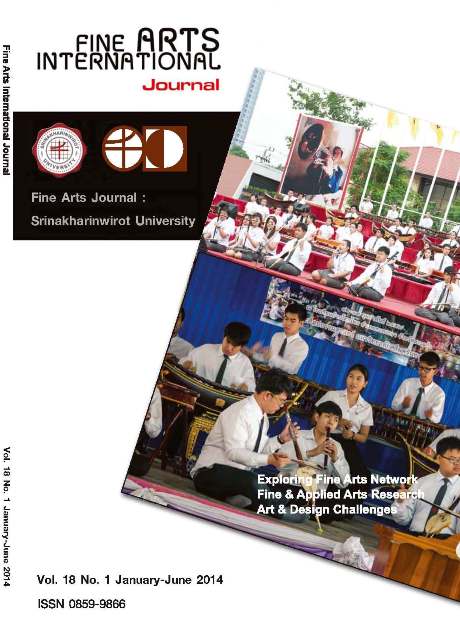History and Arrangements of Thai Traditional Music for Orchestra
Keywords:
music arrangement, Thai traditional music, orchestraAbstract
This was a qualitative research which aimed to evaluate historical evidence and fieldwork as well as to analyze the characteristics. The results were as follows:
The history of arranging Thai traditional music for orchestra began after the end of the World War I. At that time, Mr. Alberto Nazari took a Thai Napat song, Baat sa-gu-nee, for performance by an international orchestra. Later on, he bestowed it to Phra Jenduriyang to perform at the marriage ceremony of Phrabat Somdet Phra Pokklao Chao Yuhua, King rama VII, and Queen Rambhai Barni on 25th August, 1918. Undoubtedly, this piece was the first Thai traditional song arranged for an international orchestra.
From the past until now, there were many people who played important roles in creating and arranging the music for orchestra continuously, including Alberto Nazari, Phra Jenduriyang, Prung Prasarnsap, Prasidh Silapabanleng, Lt.Comdr. Piyaphan Sanitwongse na Ayudhya, Admiral ML Usni Pramoj, Suriyan Ramasutra, Vanich Potavanich, and Maj.Prateep Suphanroj.
Furthermore, by analyzing the character of Thai traditional songs that were arranged for an orchestra such as Pleng pa-tom, Khab-mai-bandho, Rabum Sukho-Thai, Ka-man-sai-yok, Lao Duang Duen, Kleun Kratob Fang, Lao Somdej, Lao Duang Dawk Mai, Khek Bor Ra Thet, and Hom rong Kwan Mueng, it was found that the most important characteristic of the music arrangements is that it still retains the original tradition and some did not. However, most of the music arrangements used the major scale and the thai traditional song that were arranged mostly used a duple meter.






